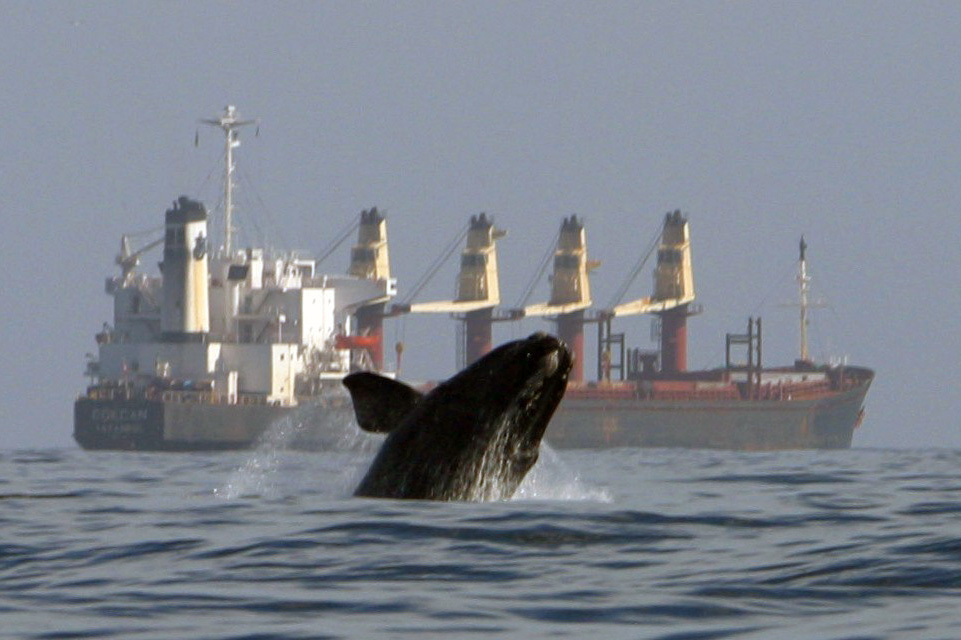Whales show new pathways to managing our oceans
A new study suggests there is an urgent need for ocean conservation to put climate change and biodiversity at the centre of management and policy
I
t is estimated that there are only 400 North Atlantic right whales (Eubalaena glacialis) remaining, with just 100 breeding females. In recent years, the endangered mammals faced an added threat as oceans warmed and their main food source moved north. Following their prey, a number of whales found themselves in the Gulf of St. Lawrence in Canada where deaths resulted from vessel strikes and entanglements in fishing gear.
To address the problem, the federal government in Canada moved quickly. It implemented gear and vessel speed restrictions, closed fisheries and monitored and tracked the species. When a whale is spotted in a certain area, a temporary speed limit is imposed in shipping lanes. The response was dynamic, rapid and could offer long-term protection. It was an example of a climate-smart way of adapting to warming seas as well as preserving biodiversity by protecting the few North Atlantic right whales that are left.
Marine Protected Areas
The importance of an international effort to conserve and look after the oceans in the face of climate change and in order to safeguard biodiversity has never been so crucial. Climate change is already altering the shape and formation of the seas and affecting ecosystem health. The distribution, territories and composition of marine ecosystems in the kelp forests, seagrass meadows, mangroves and corals which make up the Marine Protected Areas are subject to great change – and the future management of these areas must become dynamic and adaptable.
A recent report by leading marine ecologists and biologists has called for complete reform of the way the global seascape is managed and how marine parks and reserves are designed in order to meet the dual, and inextricably linked, challenge of climate change impacts and ecosystem vulnerability.

Encounters can end badly for the Right whale. Image credit: Florida Fish and Wildlife Conservation Commission
Scientists have warned that countries must integrate climate change into their management policies and tools for conserving Marine Protected areas (MPAs) as very few already do. The natural world has a crucial role to play in climate regulation, mitigation and adaptation, and a coordinated global effort is needed to take both climate and biodiversity into account.
First, the report calls for a solid evidence base which demonstrates the benefits of Marine Protected Areas for climate resilience. For example, mangroves sequester carbon at rates over 45 times more than terrestrial forest ecosystems while also sustaining high biodiversity.
Static and dynamic tools
Across the world’s seas, there are a range of areas that vary on the spectrum of vulnerability, climate impact and future projections. Currently, the network of MPAs is skewed towards areas which have had relatively low historical variability in temperature. However, the scientists warn that it would be wise to protect all areas, especially those with high historical variability.
To respond adequately to the dynamic nature of climate impacts and ecological responses, a climate-biodiversity plan must combine both static and dynamic tools. Static tools include long-term monitoring, conservation of key ecological features and creating networks for fixed migration corridors. Dynamic ocean management would include providing short-term and seasonal corridors or stepping stones for species and responding to rapid shifts in species distribution, as in the example of the North Atlantic right whales in Canada.
New incentives?
But how does one build climate-biodiversity into global seascape management? The reports’ authors argue that appropriate policy incentives are needed. They lay the blame of a worldwide lag in adoption of climate principles on a lack of incentives.
One way of incentivising would be new international biodiversity and conservation targets. For example, the creation of a specific, quantifiable target for Marine Protected Areas across the world which explicitly integrate climate change into their management and design plans. Previous targets for environmental problems suggest that specific, measurable goals can be effective.
Another recommendation is the development of legislative tools to allow for rapid, real-time response deployment. For example, the closure of fisheries that the Canadian government implemented to protect the whales, as well as vessel speed restrictions. Individual states should consider legislation that would allow for dynamic, climate-smart conservation planning tools.
The scientists say that low-income countries are often the most affected by climate and biodiversity challenges, and these states should thus not receive disproportionate financial and social burdens. The impact on local communities and society within each country, as well as its norms and beliefs, must be at the forefront of planning.
The report recommends an expansion of the number of Marine Protected Areas with climate change and biodiversity at the centre of management objectives. These will mitigate adverse ecological effects and protect species, as well as human wellbeing, as the challenges the world faces become ever more ubiquitous and increasingly severe.
The ideas presented in this article aim to inspire adaptation action – they are the views of the author and do not necessarily reflect those of the Global Center on Adaptation.